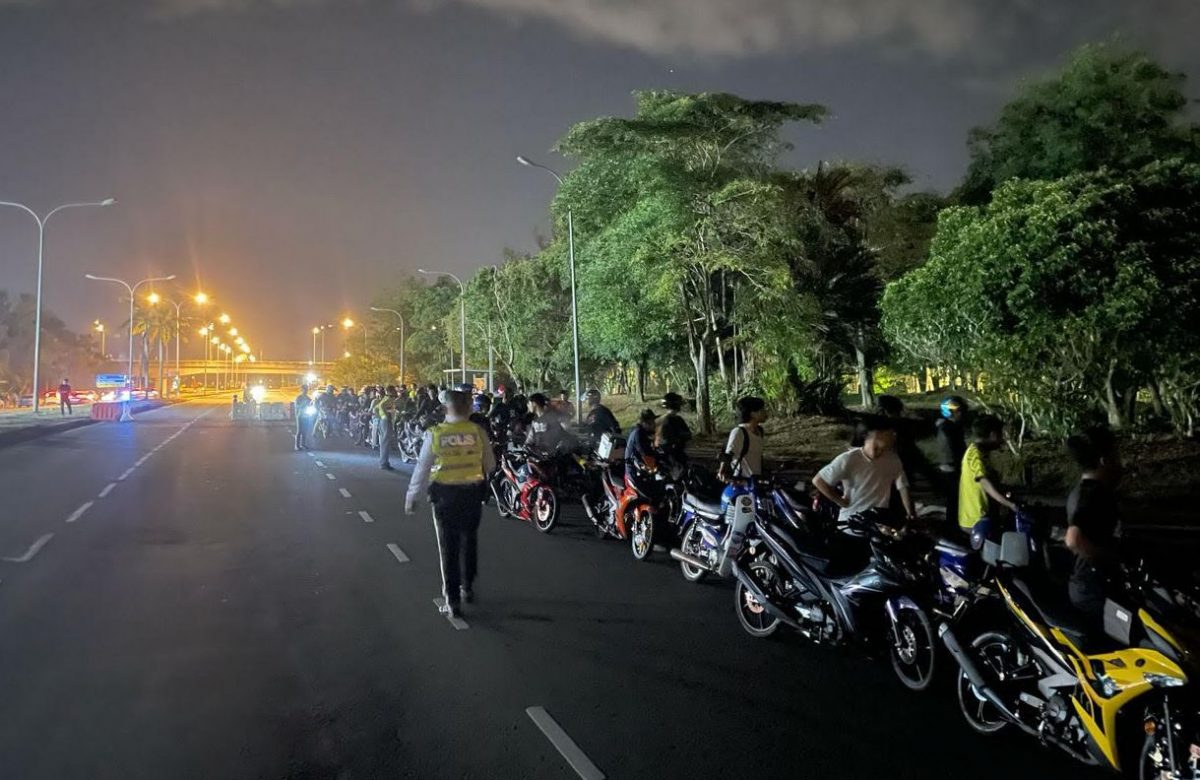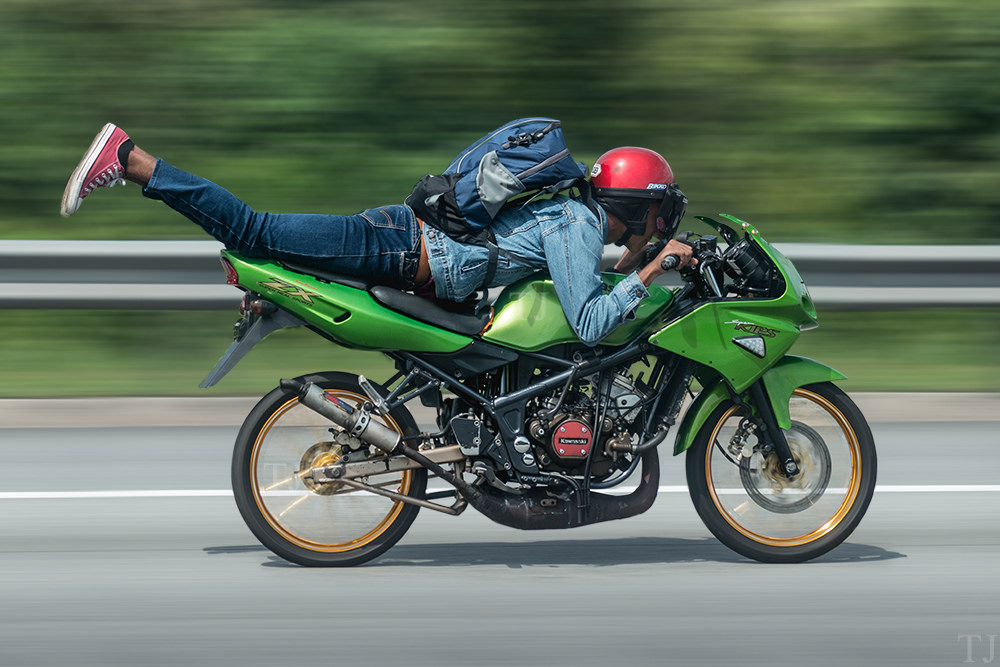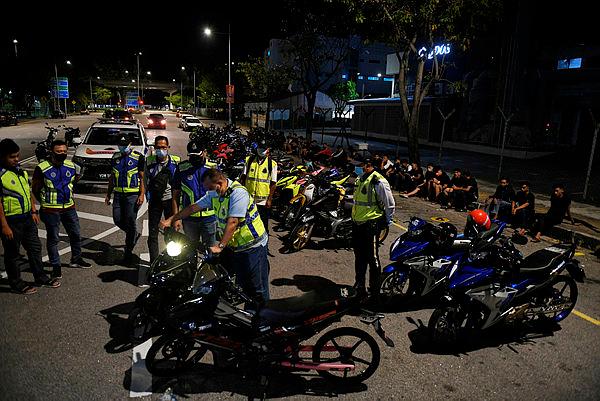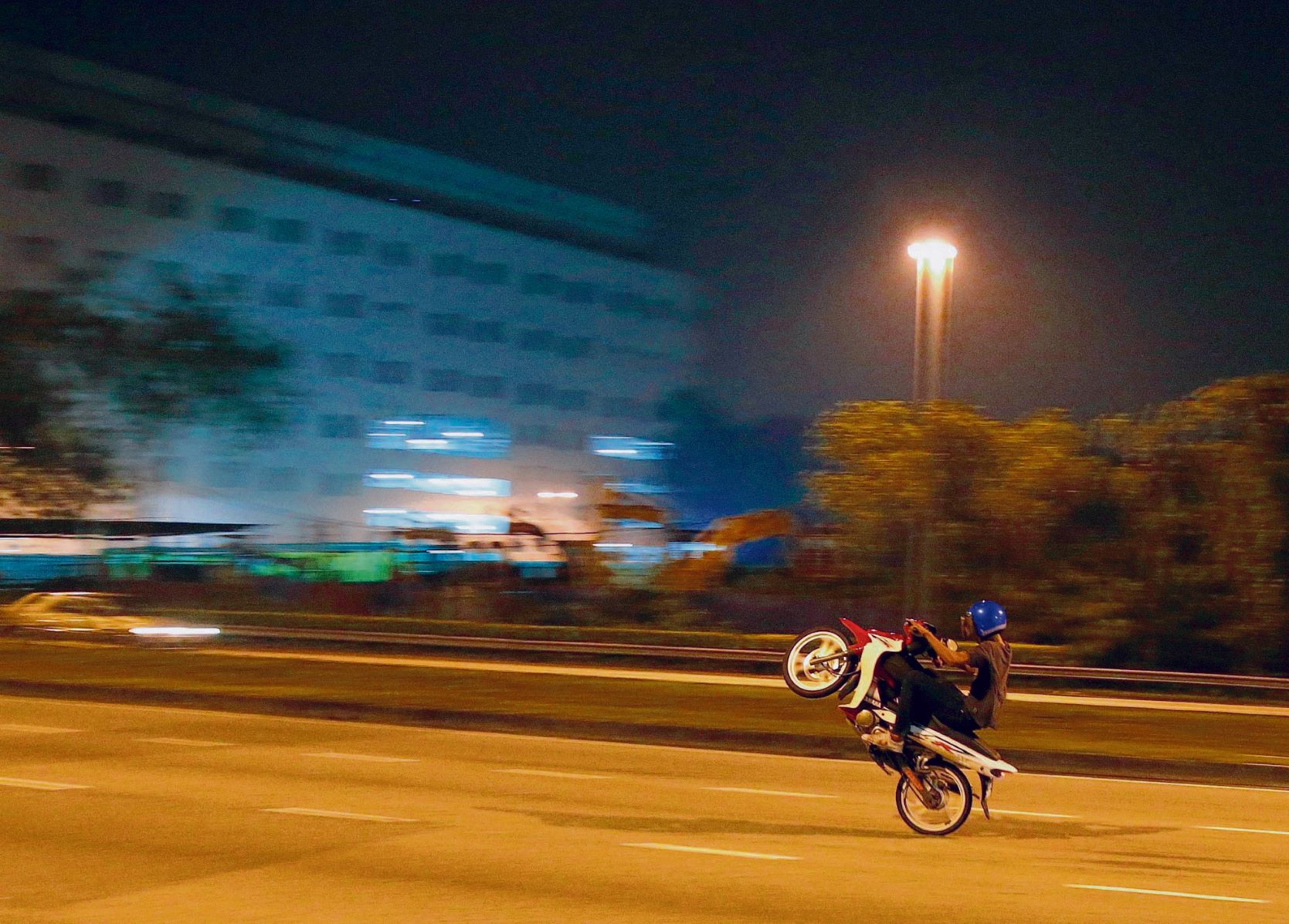Mat rempits, notorious for their nightly disruptions and daring stunts, have become an emblem of urban Malaysian life – and a complex sociological issue. One local writer takes a deep dive in a bid to learn more.
Lying in bed at night, it’s just the sound of your fan or AC unit that’s lulling you to sleep. But at some point around midnight or later, like clockwork, a sharp whizzing sound from the highway outside penetrates your closed windows and wakes you. It sounds exactly like the buzz of a mosquito, except a hundred times louder. This is how mat rempits got their name, an onomatopoeia of their menacing engines, and also a clever near-homophone of the phrase ‘ramp it’ – something which they risk their lives to enjoy every time they get on their motorcycles.

I’ve not met a single person who likes or speaks positively about mat rempits. If they’re not disturbing your nights, well, they’re also disturbing you in the daytime. You could be having lunch outside or taking a stroll and suddenly hear its trademark noise cutting through the ambience. It’s certainly attention-grabbing, and if you looked up and managed to catch a glimpse of these motorcyclists, you can be sure they’re zipping by while pulling all sorts of bike stunts, such as supermans or wheelies, any kind of illegal trick that guarantees their routine run-ins with the police.
Mat rempits are, to the unsuspecting outsider, a fascinating phenomenon of Malaysia’s urban scene, but through the political eye of society, the gateway to a larger social problem that’s constantly scrutinized. As their numbers ramp up, it can’t be avoided in almost any kind of sociological discourse regarding the country’s welfare. ‘Rempitism’ is not without discussing socioeconomics, law enforcement, education, and culture all at once. And regardless of how they’re perceived or which side of the debate is winning, they’ve certainly made their mark on Malaysian culture.

Bike hooliganism is not unique to Malaysia, of course. In most parts of the world, they refer to biker gangs and illegal street racers on public roads. All carry a bad reputation, yet this hasn’t stopped major bike manufacturers like Harley Davidson or Yamaha from selling ‘hooligan bikes’ that are suited for angsty daredevil activities. But owing to its relatively high price, they tend to attract perfectly law-abiding bike enthusiasts.
In contrast, mat rempits in Malaysia can get started on the cheapest motorcycle of the lot. Costing less than RM10k, kapcais (the colloquial name for an underbone bike), with its lightweight and replaceable features, are the most common and affordable model for them, which means it’s much easier for anyone to get involved.

If you look up mat rempits anywhere, you can be sure their never-ending battle with local authorities throughout the country are daily news. The more concerning fact is that more often than not, a large number of these mat rempits are reportedly teenagers. Apparently, it’s at that age when most of them first step into the underworld of bike hooliganism. A three-year-long study on mat rempits pinpointed one major but unsurprising reason as to why so many teens are easily roped into the culture: peer pressure. Further research finds its root in adhering to masculine ideals. At the end of performing aggressive or trigger-happy stunts is a rewarding sense of thrill and pride. They feel assertive whenever they defy the law, and their chests are further puffed up once they’ve got extra attention from women as well. Ultimately, it’s about bravado.
But there are other push factors that would make an average teen join the troublesome ranks of mat rempits. Social class is one large determinant; a majority of these men are found to be lower-to-middle class. They’re also more likely to be school dropouts, unemployed, or low-income workers. There’s a clear distinction that mat rempits start out from a disadvantaged position, which perhaps leaves many susceptible teens’ upbringing at home as the last line of defence to deter them away from that lifestyle. And yet, somehow, it’s also overkill to lay the complete responsibility of preserving moral values on parents, especially not when they too are faced with their own challenges of their social class in the rat race.

A recent viral video of a father burning his mat rempit son’s motorbike expresses the severity of concern for the lifestyle. The father stated that he feared most his son getting in trouble with the law or worse—losing his life in an accident. The number of deaths from illegal racing are reported nearly as often as stories of the culprits are getting arrested. Mat rempits aren’t just causing chaos; they’re putting their lives on a much thinner line every night because, unlike professional trick cyclists, they’re not trained or qualified to do bike stunts, much less even on a public road. Never mind the fact that a good amount of them don’t even have a motorcycle license to begin with.
Some pin this on poor regulation of government policies and law enforcement. With the warning of a hefty fine and a few roadblocks on empty roads in the middle of the night, it’s still insufficient for police to quell mat rempits at every corner. Moreover, a common criticism of Malaysian law enforcement is their leniency, which gives perpetrators one too many verbal warnings for any kind of jurisdiction to be effective. In the nature of most sociological problems in Malaysia, people also tend to racialize the way authorities are handling the mat rempit problem, since a majority of them and policemen are Malay, and it’s much easier to conclude they’re racially biased when the reporting citizen is a non-Malay.

Regardless of how accurate it all is, racial conspiracies are too busy cannibalizing themselves to really answer the question as to why mat rempits are becoming a burgeoning problem. Despite hammering down on harsher penalties against mat rempits over the last decade, these bikers don’t seem much fazed by it. Millions have also been coughed up by the ministry of transport to provide an avenue for them to fulfil their adrenaline rush on legal race tracks, but to no avail; the affordability to use them are something mat rempits don’t have and certainly don’t want, not with their penchant for rebellion.
The more probable solution will have to be long-term, and that’s best tackled by education. Road safety leaves little to be desired in the local education syllabus, and certainly unable to cater to the overwhelming number of students riding motorcycles to school at this point of time.

But aside from teaching road safety and calling it a day, a broader perspective should be taken towards how these youths are brought up. There is a need for better quality education in general, meaning better teachers, better curriculums, and so on. It braces a more prospective pipeline for the next generation, not just steering them away from rempitism but towards other job opportunities that replaces the boredom in their hands with something contributive to society. Food delivery riders are a good example of this, and hopefully it could be the prelude to a brighter outlook for mat rempits.
For now, though, they remain a cautionary tale told over and over again to the Malaysian public. And as much as we don’t want it, they’ve been engraved in our cultural image. As they disrupt our midnight peace, loom in dark alleys, and loudly zip by on their motorbikes, we’re inclined to hate them tremendously and curse them from our beds, but demonizing them won’t make a miracle happen.
"ExpatGo welcomes and encourages comments, input, and divergent opinions. However, we kindly request that you use suitable language in your comments, and refrain from any sort of personal attack, hate speech, or disparaging rhetoric. Comments not in line with this are subject to removal from the site. "





















